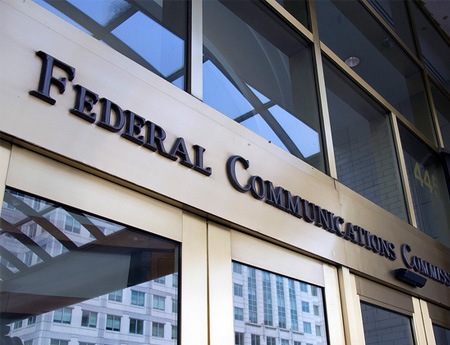FCC Downsizes (Slightly) Most Station Auction Prices

Due to adjustments in the data the FCC used to calculate interference between stations and the difficulty in repacking them after the auction—which determines their spectrum's value—the commission Thursday is reissuing adjusted opening bid prices and constraint files for TV stations in the reverse auction, according to a just released public notice.
That includes Telemundo's WNJU New York (New Jersey), which now claims the highest bid price at $900 million, with WCBS bumped from that spot to $889 million. Since all the other station prices are indexed to that top price, adjustments were necessary down the line.
Not all the prices changed. An FCC official speaking on background said that 99% of the prices changed by less than 1%. But those 99% averaged a decline, though less than a .2% on what are opening prices most of which will be going down anyway.
He emphasized that the changes do not impact the start date of the auction, which remains March 29.
Because the FCC wants to give broadcasters the same 60 days to check out the new prices, it is also moving its application window and opening that window a bit wider.
The previous filing window had been noon on Dec. 1 through 6 p.m. on Dec. 18. The new window will be noon on Dec. 8, but will not close until Jan. 12. The extended time period is also in recognition of the holidays that fall between. The forward auction application deadlines have also been moved from noon Jan. 14-6 p.m. Jan. 28 to noon Jan. 26-6 p.m. Feb. 9.
The FCC released its constraint files for stations on Oct. 15, then bid prices the next day. But a couple of stations took issue with how their files were calculated, the FCC found four more discrepencies itself in the review (and a Class A low-power decertified and moved to low power, which meant it was no longer protected in the repack). The FCC wound up correcting those files, which created a ripple effect on price and constraint file calculations that required reissuing both baseline constraint files and bid prices.*
Broadcasting & Cable Newsletter
The smarter way to stay on top of broadcasting and cable industry. Sign up below
One of those six stations was WNJU, which is moving from the Empire State Building to One World Trade Center, so its coverage will increase. WCBS was already on One World, but WNJU will reach slightly more people, thus its boost from $819 million in its original bid price to $900 million. That is a 9.8% increase, the largest price increase for any station. Of the eight out of over 2,000 stations whose price change is more than 1%, six are increases.
"The Task Force is committed to transparency and acted quickly to correct a handful of files to ensure accuracy in repacking. The price formula remains unchanged and, for 99 percent of stations, the change to the opening bid prices using the corrected data is minimal – less than one percent," said an FCC spokesperson.
"Extending the filing windows gives broadcasters and potential forward auction participants more time to consider their options without jeopardizing a timely and successful auction.”
The FCC also has a statutory obligation to protect coverage areas and interference separations, which necessitated the adjustment in constraint files, and ultimately in prices.
"This is commendable super due diligence by the FCC Staff and it is great news that there is no change in the March 29 date," said Preston Padden, former executive director of the former Expanding Opportunities for Broadcasters Coalition, which had to disband in the run-up to the auction due to anti-collusion rules. "The extra filing time for stations and the emergence of well funded new entrant bidders, like Facebook exec led Rama, assure that more broadcasters will be able to benefit from the historic bidding frenzy for the last available low band spectrum."
Padden has said most of his former 87 members plan to participate in the auction.
The National Association of Broadcasters had no comment on the move of the deadline for filing or changes in the auction bid prices or constraint files.
To check out the FCC public notice, go here.
To check out the new constraint file baselines, go here.
To check out the new bid prices, go here.
* According to the FCC, here are the constraint file changes that necessitated the new notice and changes to bid prices and constraint files. "The stations with corrected information are WNJU, Linden, New Jersey (new geographic location and parameters); KOHD, Bend, Oregon (channel 51 move); KPXE-TV, Kansas City, Missouri (channel 51 move); WPXA-TV, Rome, Georgia (channel 51 move); KWSU-TV, Pullman, Washington (antenna height change); and KEMO-TV, Santa Rosa, California (discrepancy between station’s DTS facilities and information in Commission databases). In addition, WAZE, Madisonville, Kentucky submitted a request to voluntary downgrade from Class A to low power status on October 16, 2015, which the Commission confirmed on October 19, 2015. We note that the correction of WNJU’s geographic location to One World Trade Center will make it the UHF station with the highest volume (i.e., combination of interference-free population and constraints) and, therefore, the highest opening bid price. That change will also affect the population data of the largest number of other stations."
Contributing editor John Eggerton has been an editor and/or writer on media regulation, legislation and policy for over four decades, including covering the FCC, FTC, Congress, the major media trade associations, and the federal courts. In addition to Multichannel News and Broadcasting + Cable, his work has appeared in Radio World, TV Technology, TV Fax, This Week in Consumer Electronics, Variety and the Encyclopedia Britannica.










